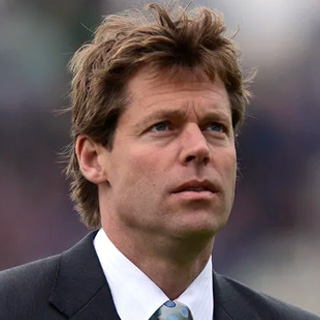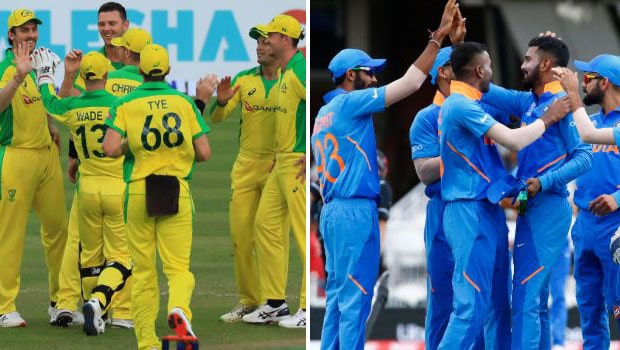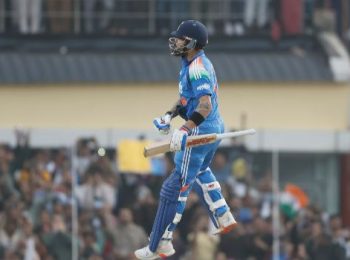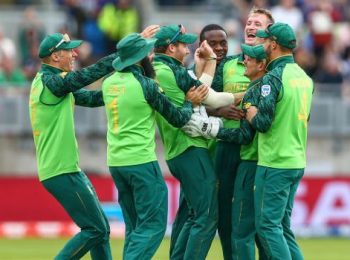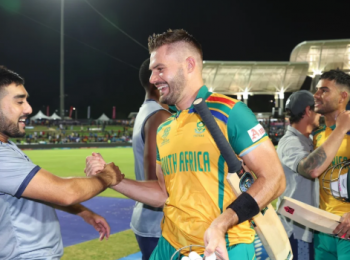The upcoming India vs Australia series should be a terrific one. India has had a quick turnaround, coming straight from the Test match series against the West Indies. The conditions in Perth are very different, and that will be the first major challenge for many of the Indian players. There are no warm-up games; it’s straight into a three-match series, which will be quite demanding.
On India’s team selection and approach to this series, it seems spot-on. The danger during a four-year World Cup cycle is to look too far ahead, worrying more about future tournaments than the present. The key is to focus on what is happening now. With players like Rohit Sharma and Virat Kohli, if they are still keen and have the desire to play in the next World Cup, then they should definitely be part of the team. It’s a no-brainer that they play in this series and continue to do so leading up to and including the World Cup.
However, if either player shows uncertainty about continuing until then, the management may need to reconsider. But, it’s likely both are eager to participate, and that should settle any doubts. The decision regarding captaincy also seems fair. Giving Shubman Gill two years to grow into the captain’s role allows him to become deeply involved in the ODI setup while continuing his progress in Test cricket. The transition period with Rohit and Kohli still around will only help him in developing as a leader. These are smart strategic moves by India.
One possible concern for me is Dhruv Jurel’s selection. If I were a selector, Sanju Samson might have been a better option in the lineup. It’s also just a matter of time before Yashasvi Jaiswal becomes a world-class player across all three formats. He’s unlucky to miss out this time, but that opportunity will come soon enough. Harshit Rana needs a strong series after struggling with the ball lately. Prasidh Krishna could enjoy the conditions in Perth, where the bounce should suit his style of bowling. Kuldeep Yadav too might thrive there if he bowls well.
For Nitish Kumar Reddy, this series might bring back positive memories from his previous tour of Australia. With Jasprit Bumrah and Ravindra Jadeja not available, it’s a great chance for other bowlers to step up. Arshdeep Singh should definitely be part of the playing eleven. Ideally, India’s pace attack should feature Mohammed Siraj, Prasidh Krishna, and Arshdeep Singh. Kuldeep should be an automatic choice in the spin department, with Axar Patel also in the mix. However, Washington Sundar might have to sit out. Overall, the
foundation of a very strong Indian side is there. The real test will be how quickly they adapt to the conditions and find rhythm against a high-quality opposition.
On the Australian side, they have some selection concerns of their own. Adam Zampa and Josh Inglis are both unavailable for the first game, which are significant losses. They do have adequate cover, though, and their batting lineup looks powerful and exciting. Mitchell Marsh should open the batting, partnered by Travis Head. Matthew Short is another talented player in the mix. They have Mitch Owen, Josh Phillippe, who will done the wicketkeeping gloves. Cameron Green adds depth and balance as an all-rounder.
Australia will need to adjust their combinations slightly. With the Ashes series around the corner, players like Josh Hazlewood and Mitchell Starc will have to manage their workload and focus carefully. Keeping their mindset right for this ODI series before a major Test assignment will be important. Despite missing a couple of players, Australia still has a strong team.
Ben Dwarshuis is an impressive one-day bowler, while Nathan Ellis is another player who has been consistent and reliable. Cooper Connolly is a promising all-rounder, and Matthew Kuhnemann will step in for Zampa as the main spinner. Although this isn’t a full strength Australian side, it remains a very competitive one. The added advantage is that they are used to the conditions at home, which could be crucial in the first match of the series.
For India, this is the beginning of a significant challenge. Looking ahead to the next World Cup, which will be played in South Africa, these conditions in the southern hemisphere are quite similar. That makes this series even more important for India’s preparation.
At full strength, Australia might have had a slight advantage, but with Zampa and Inglis missing, the contest looks evenly balanced. Home conditions still favor Australia marginally, but it’s set to be a close series between two evenly matched teams.
The key takeaway that teams should avoid looking too far ahead in a four-year World Cup cycle. Many teams make the mistake of planning excessively for the future and forgetting to focus on the present. History has shown that the side that wins the most games leading up to a World Cup often goes on to win the tournament itself. The top-ranked team in the world tends to stay consistent and confident.
Therefore, the focus should remain on performing well now, winning matches consistently, and maintaining momentum, rather than getting lost in long-term planning. The best approach is to live in the present, with only a slight eye on what’s coming two years down
the line. Striking the right balance between immediate performance and future preparation is crucial. For India, this series in Australia marks an important step in achieving that balance and building towards their long-term goals without losing sight of the present.






